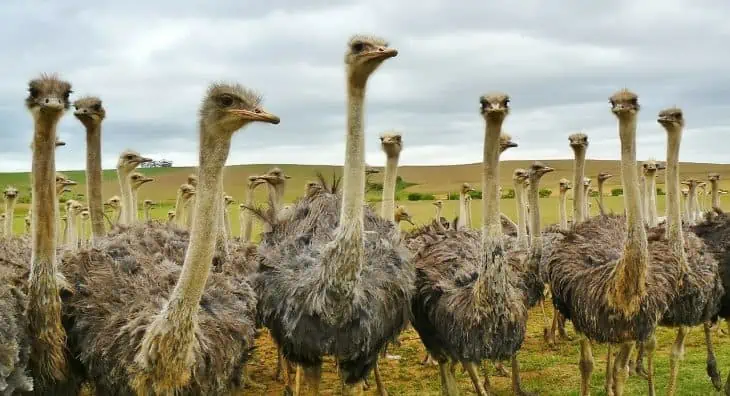
Ostriches are one of the most peculiar but most amazing birds found on the planet. Living in the savannahs and woodlands of Africa, they were once called “camel birds” because their characteristics closely resemble that of a camel. One of their best features is their speed. They can run nearly as fast as a cheetah. Cool ostrich facts, huh?
Think about how much fun it would be to ride on the back of an ostrich! It’s perfectly safe too as ostriches hold out their short wings for balance, so you won’t fall out if ever ride one!
The ostrich’s powerful legs not only take it where it needs to go, but they’re also useful in self-defense. If an ostrich is cornered by a hungry predator like a lion, cheetah, leopard, or hyena, it will kick with such intensity that it will kill the predator! Check this out: each two-toed foot is often equipped with a ten-centimeter sharp claw, so predators should be wary. You don’t want to be scratched by them!
Know more about this majestic and one-of-a-kind bird with these speedy ostrich facts!
- Ostrich can run at about 70 kilometers per hour.
- There are nine known types of species.
- Seven of these types are already extinct.
- Common ostriches have a weight of approximately 63 to 145 kilograms or 138 to 320 pounds.
- They have 50 to 60 tail feathers.
- Ostriches are the fastest land bird.
- They are flightless birds, which means they are naturally unable to fly.
- Common ostrich and Somali ostrich are the last two living species of ostriches.
- People use ostrich feathers as decorations and feather dusters.
- The ostrich is a member of Palaeognathae or a group of flightless birds.
- The scientific name of the ostrich is Struthio camelus.
- They are the world’s largest bird.
- Ostriches are strong runners, they can maintain their speed in tremendous distances.
- They have long legs and necks.
- A group of the ostrich is called a herd or flock.
- Ostriches fight using their feet, a powerful kick can kill a lion.
- They have excellent eyesight. An ostrich can easily spot a predator from afar.
- It is believed that ostriches had existed 40 million years ago.
- Ostrich predators like hyenas and jackals would drop pieces of stone onto their eggs to break them.
- Ostriches don’t have teeth, they swallow rocks to grind the food they eat.
The ostrich is the only bird with two toes.
All flying birds have four toes on each foot, while flightless birds have three toes. The ostrich is the only bird that has two sharp toes on each foot. They have one big toe, which looks like a hoof. It carries the weight of the bird and a small toe. This helps them balance.
Ostriches do not bury their heads in the sand.
Bury your head in the sand is an expression that does not literally mean to bury your head. It means avoiding a problem or rejecting a piece of advice. This expression is said to originate in ostriches because they bury their heads when there are predators. On the contrary, ostriches do not bury their heads in the sand when in danger.
Ostriches don't have a keel bone.
Ostriches are flightless birds because their breastbone lacks the keel bone or the bone that serves as an anchor to which a bird’s wing muscles attach. Aside from this, it is also impossible for their small wings to lift their big and heavy body off the ground. Generally, ostriches only use their wings for balance, especially when they run and change direction.
Ostriches can survive several days without drinking water.
Typically, ostriches eat fruits, roots, seeds, and leaves, but they sometimes consume insects, lizards, rodents, and other creatures in their habitat. Moreover, they can survive two weeks or more without water, as they get enough water from plants.
Ostriches live in Africa.
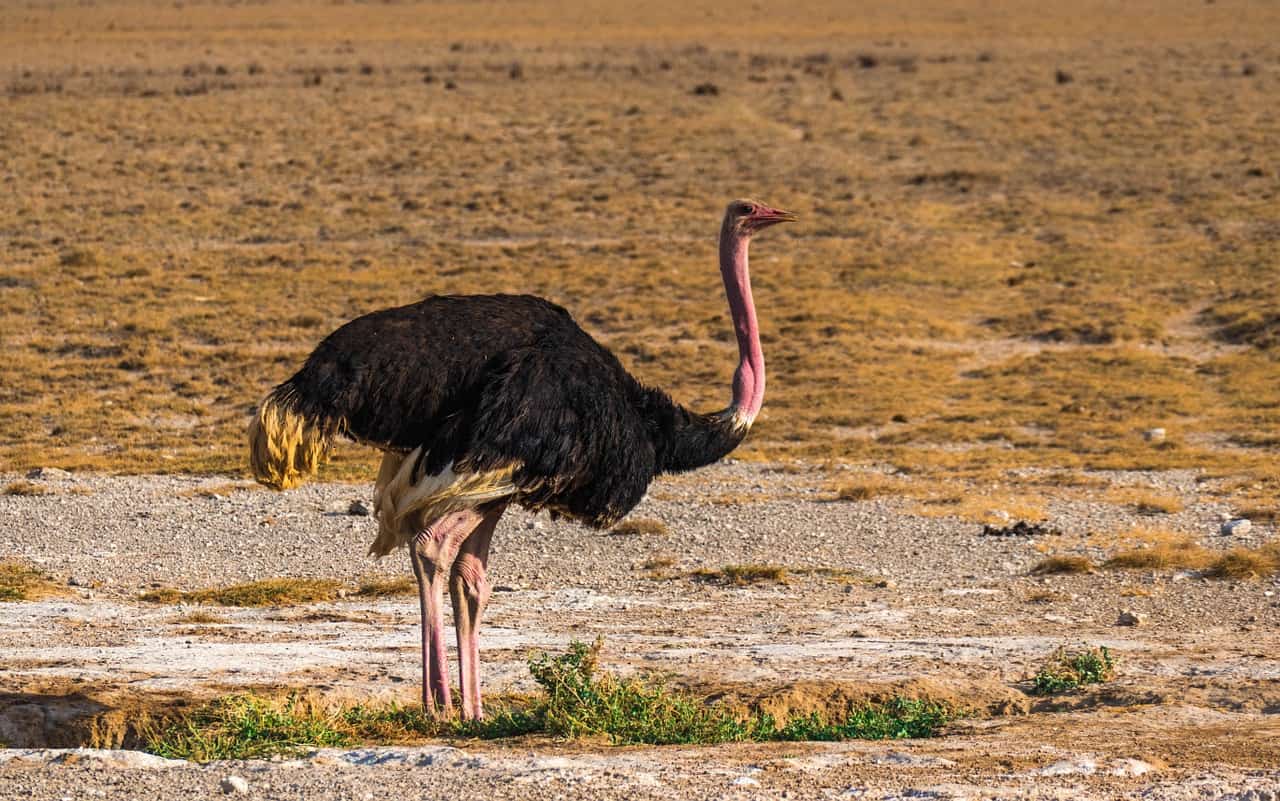
Ostriches inhabit the dry, hot savannas and woodlands of Africa, specifically Eastern and Southern Africa. It is said that some species of ostrich once lived in Asia and Arabian Peninsula. Unfortunately, they were extensively hunted.
Ostriches have three stomachs.
Ostriches really have a lot of peculiarities compare to other birds. They have three stomachs that have different functions: the glandular stomach, which takes the role of the gall bladder; the muscular stomach or the ventriculus where stones and pebbles and other food are grinds; then food is passed into their long intestines. Ostriches secrete urine from feces separately.
A male ostrich performs a dance to court a female ostrich.
The male ostrich uses its feathers to attract a hen or female ostrich. Accordingly, male ostriches will also perform a dance, flap, or bow their wings to get the female’s attention.
According to research, the neck of a male ostrich becomes red, while the feather of the female ostrich becomes silvery when they are ready to mate.
Ostriches do not lay eggs throughout the year.
The breeding season of ostriches begins in June or July every year. Unlike chickens, they don’t lay eggs throughout the year. Ostriches lay only one egg every other day. The dominant female ostrich lays about seven to 10 eggs inside the nest, while the other hens lay their eggs outside the nest. Similarly, a single nest may have approximately 60 eggs. The male and female ostriches incubate these eggs.
Ostrich egg is the biggest egg in the world.
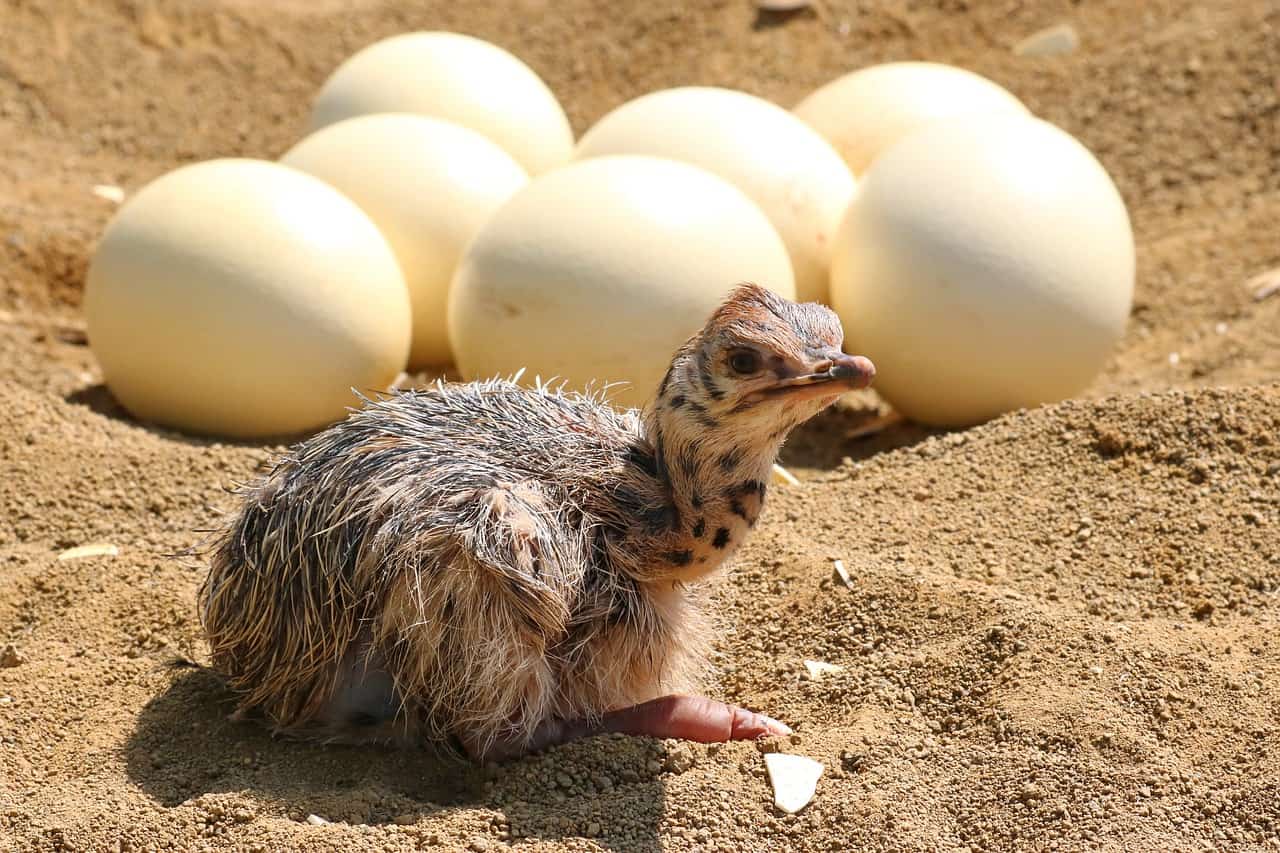
An ostrich egg measures 15 centimeters or 5.9 inches long and weighs 1.5 kilograms or 3.3 pounds. It is the largest egg in the world.
The eggshell is so hard the mother ostrich needs to help her chicks break it. A person can also step on it without breaking it. You can also buy an ostrich egg in some stores, and they can cost more than $35 apiece.
Its meat is high in protein and low in fat.
Ostrich meat is commonly made as a stew, and also best in making ostrich steaks. Ostrich meat tastes like lean beef. It’s high in calcium and protein, but low in fat and cholesterol. A pound of ground ostrich meat costs about $10 to $15, while fillets and tenderloin slices are around $25 to $50. A butchered 14-month-old ostrich can produce approximately 75 to 130 pounds or 34 to 58.96 kg of meat.
Newly-hatched ostrich chicks are about the size of a chicken.
Chicks have grey, spiky feathers at birth, and are about the same size as a chicken. They grow to about 30 centimeters or 11.8 inches per month. At its sixth month, they would be as tall as their parents. A one-month-old chick can run at approximately 55 kilometers per hour or 35 miles per hour, but they are still very vulnerable to predators such as cheetahs.
Ostriches create a range of sounds.
Ostriches produce a variety of sounds to communicate including honking, hissing, chirping, whistling, drumming, grunting, and booming. Typically, the hissing sound means to stay away, while male ostriches make booming sounds during mating season.
Humans can ride an ostrich.
An ostrich can carry up to 150 pounds. Any heavier than that and the ostrich’s bones could break, causing them painful injury. Although it’s not advisable to ride on an ostrich, some people are known for doing it. Others even offer a $35 ride where an ostrich can sprint with a human on its back.
Ostriches can adjust to hot and cold temperature.
Although ostriches are native to Africa, they can live in cold places as well. Most of their habitats have temperatures as much as 40°C. However, this animal has no issue in weathering sub-zero temperature, and seems to enjoy romping in the snow when they are brought to cold countries.
They have the ability to control their constant body temperature. For instance, they use their wings to cover the naked part of their legs to conserve heat, or leave them open to release heat.
Ostriches have the biggest eyes amongst any bird in the world.
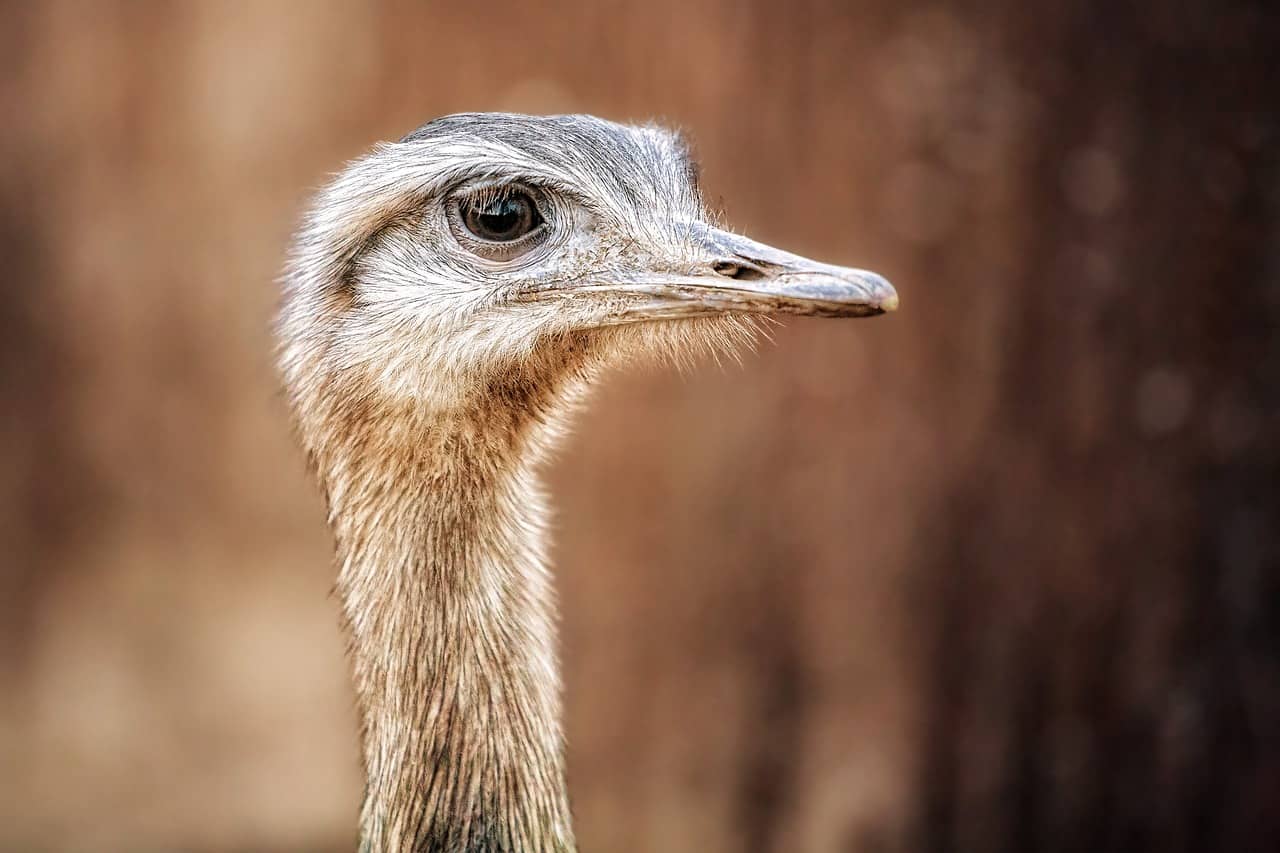
An ostrich’s eye is about 2 inches or 5.08 centimeters in diameter or close to the size of a billiard ball. They also have long eyelashes, which prevent sand from entering their eyes.
Ostriches can live for more than 40 years.
Ostriches that live in their natural habitat can live for around 40 years, while ostriches in captivity have a lifespan of about 50 years. In parallel, ostriches face a variety of predators throughout their lifetime, including African hunting dogs, leopards, lions, and cheetahs.
A male ostrich is bigger and heavier than a female ostrich.
In general, a male ostrich is bigger and taller than a female ostrich. A male ostrich grows between 6.9 and 9 feet tall or 82.8 to 108 inches, and has a weight of up to 279 pounds or 126 kilograms. A female ostrich measures 5.7 to 6.2 feet tall or 68.4 to 74.4 inches, and weighs around 242 pounds or 109 kilograms.
Ostrich's brain is smaller than their eyes.
The ostrich brain’s length is approximately 59.26 millimeters or 2.33 inches, with a width of 42.30 millimeters or 1.66 inches, and weighs about 40 grams. Meanwhile, an ostrich eye weighs around 60 grams, and just like other birds, they do not have sweat glands.
Hunters in Kalahari use ostrich eggshells as water containers.
According to reports, the hunter-gatherers, or people who depend on the wild for food in Kalahari, South Africa, still use ostrich eggshells as water containers. Traditionally, they make a small hole in the top of the eggshell, empty the contents, and fill it with water. They also collect ostrich eggs for food and beads.
Ostrich feathers became a famous ornament in the 19th century.
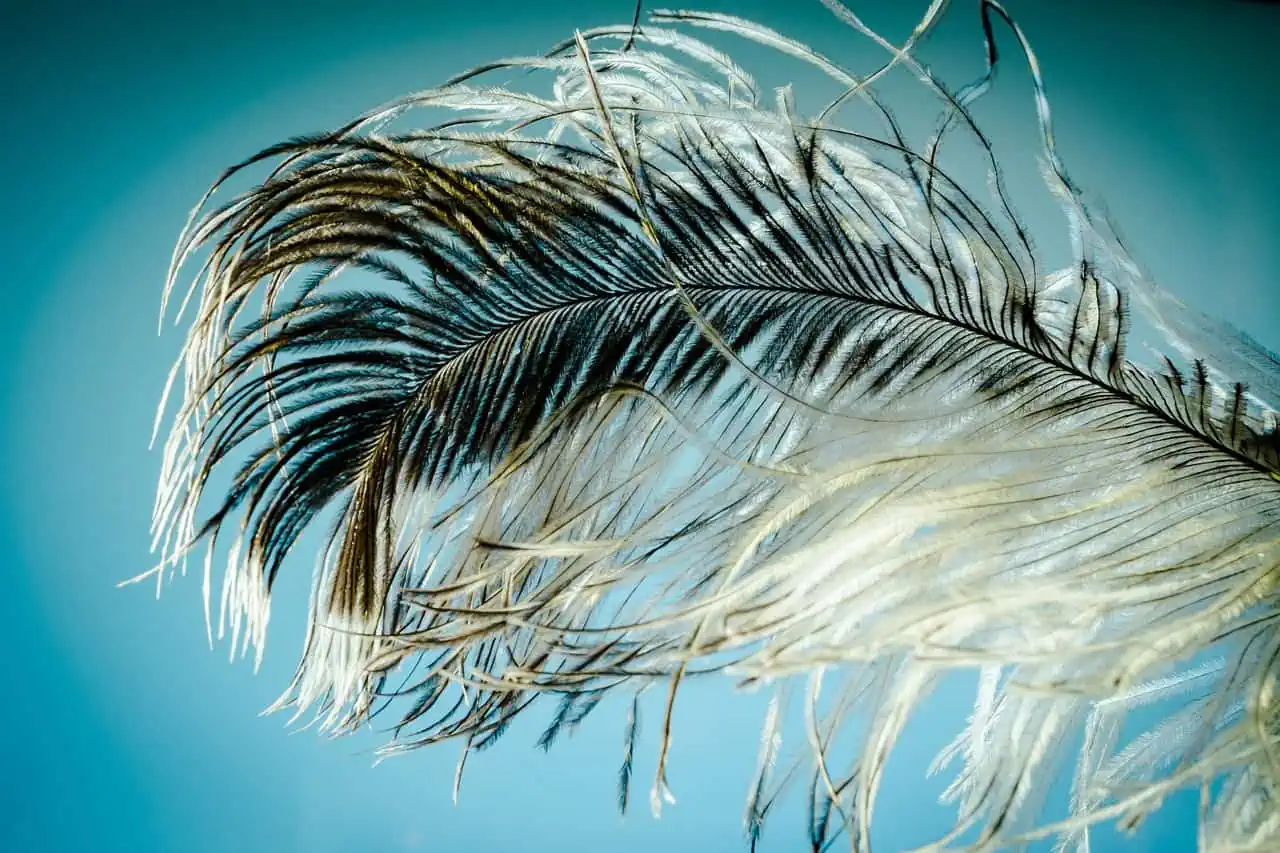
During the 19th century, ostriches were widely hunted and farmed for their feathers. Ostrich feathers became a popular ornament for fashionable clothing like hats. From then ’till now, ostrich skin is still valued. Today, we use them in producing leather products such as bags and wallets.
Was this page helpful?
Our commitment to delivering trustworthy and engaging content is at the heart of what we do. Each fact on our site is contributed by real users like you, bringing a wealth of diverse insights and information. To ensure the highest standards of accuracy and reliability, our dedicated editors meticulously review each submission. This process guarantees that the facts we share are not only fascinating but also credible. Trust in our commitment to quality and authenticity as you explore and learn with us.
